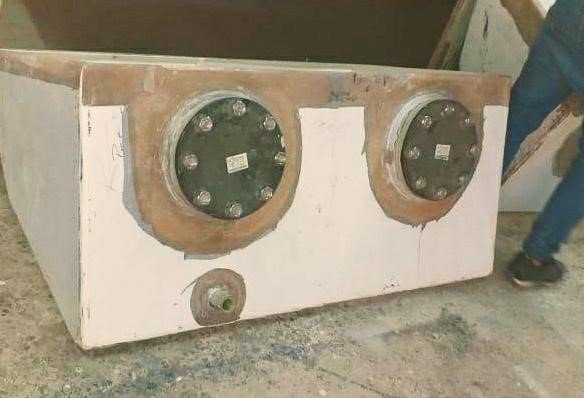We'll have a lot to think about and plan for replacement: time, material, construction, de-construction, dollars, etc, etc, etc.
Although my quotes are from Mexico where labor is much less expensive, I'll offer the blow-by-blow as an example. Although labor is cheap, some materials are more expensive - proper alloy aluminum comes from the US so is roughly +20% more expensive. For me, fabrication, installation, and materials for Fiberglass tanks (excluding fittings, which were over $1000) was $3500. Engine was removed anyway to install a generator and do some rewiring, but would have been around $800. So all-in, from scratch, around $5500-$6000. US boatyard labor rates would send this well north of $10k.
I did get quotes on 0.25" aluminum of the proper alloy (I forget what number). Although the material is much more expensive, the labor is quite a bit lower because the fittings can be easily welded in place. The fittings are about the same cost. Overall, from the quotes I received, price would have been slightly higher for aluminum. In the US, fabricating in aluminum would be much less expensive because materials are less expensive and requires less labor.
With all due respect for the other Albin 36 owner who posted prior this (PO replaced the bottoms of the tanks), if you go this route, consider replacing the entire tanks - welding a new bottom only is a bit of an unnecessary short cut given all the work to get the tanks out. I'd bet the current owner in hindsight would gladly pay an add'l $3k to have had new tanks, not just replaced bottoms.
For me, an easy decision. Fiberglass is forever and was roughly same price as aluminum in Mexico. No worries about leaking deck-fills and water puddling on top of the tank, etc.
Good luck!


